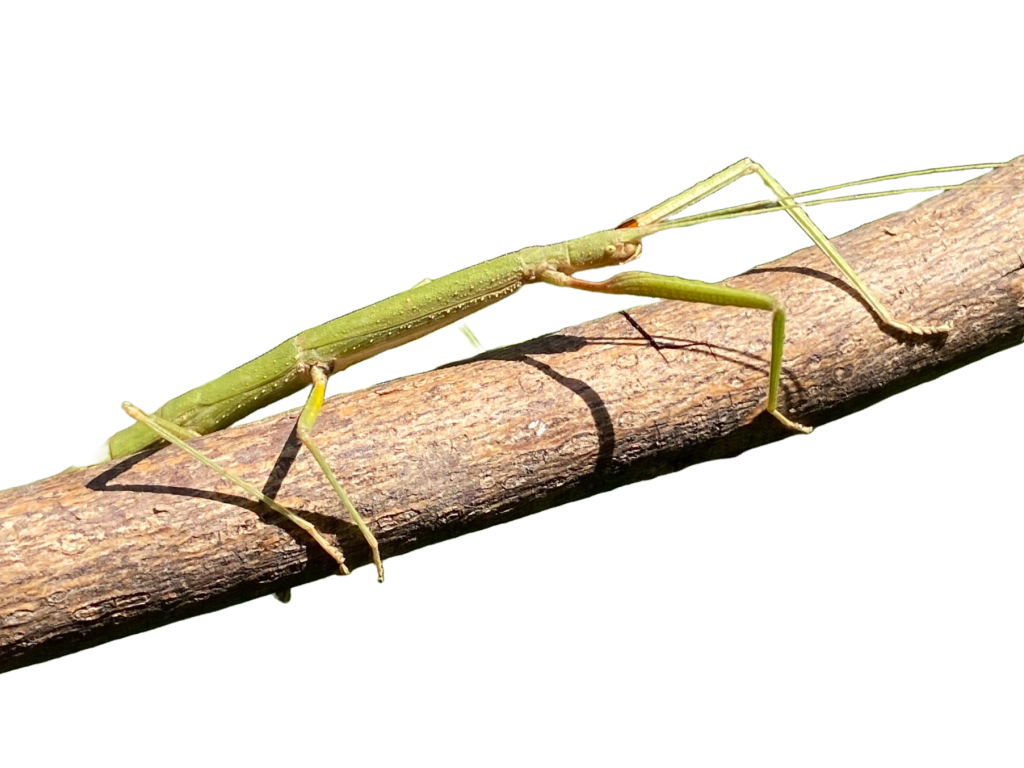Indian Stick Insect
Carausius morosus

Feigning dead
The Indian stick insect is the most common species of stick insects kept as pets. All stick insects belong to an order known as Phasmatodea. The Indian stick insect really resembles a stick with its elongated, light greenish-brownish body. The species is active at night, when it feeds on leaves mainly from rose plants. During the day, it rests on twigs, and stretches its legs along its body – looking even more like a stick.
When an Indian stick insect feels threatened, it can play dead! It “freezes” in an extended form and can fall to the ground. If, on the other hand, the species wants to startle, it stretches out its front legs and exposes the red bases of its legs, as a warning.
The Indian stick insect is the most common stick insect kept as a pet.
Close-up of the head of the stick insect.
Photo: Ken-ichi-Ueda-CC-BY
Males may exist
In many species of sticks insects, males are not needed for the species to reproduce. This is also true for the Indian stick insect – where the female can lay unfertilised eggs that hatch into new insects. The eggs are dropped to the ground without any planning, and are small and oval with a small “lid”. The eggs are easily mistaken for small seeds.
No male Indian stick insects are found as pets or in a laboratory environment, but it is believed that there are males in the wild. In stick insects, the young are called nymphs, and they are like small miniatures of the adult insects. They grow by shedding their shells, and after about 5 molts they are fully grown and can reproduce.
The eggs of Indian stick insects bear a resemblance to small olives or grapes, although they are, of course, much smaller.
Photo: Evanherk-CC-BY-SA
Young stick insects are called nymphs and look almost like miniatures of the adult insects.
Photo: Resenter1-CC-BY
Stick insects grow by molting their exoskeleton. The shell splits along the back, and the insect emerges from its old exoskeleton.
Photo: Dinosaur918-CC-BY-SA
Distribution worldwide
South India.

Threat based on the Red List

Trade regulations
CITES: Not listed.